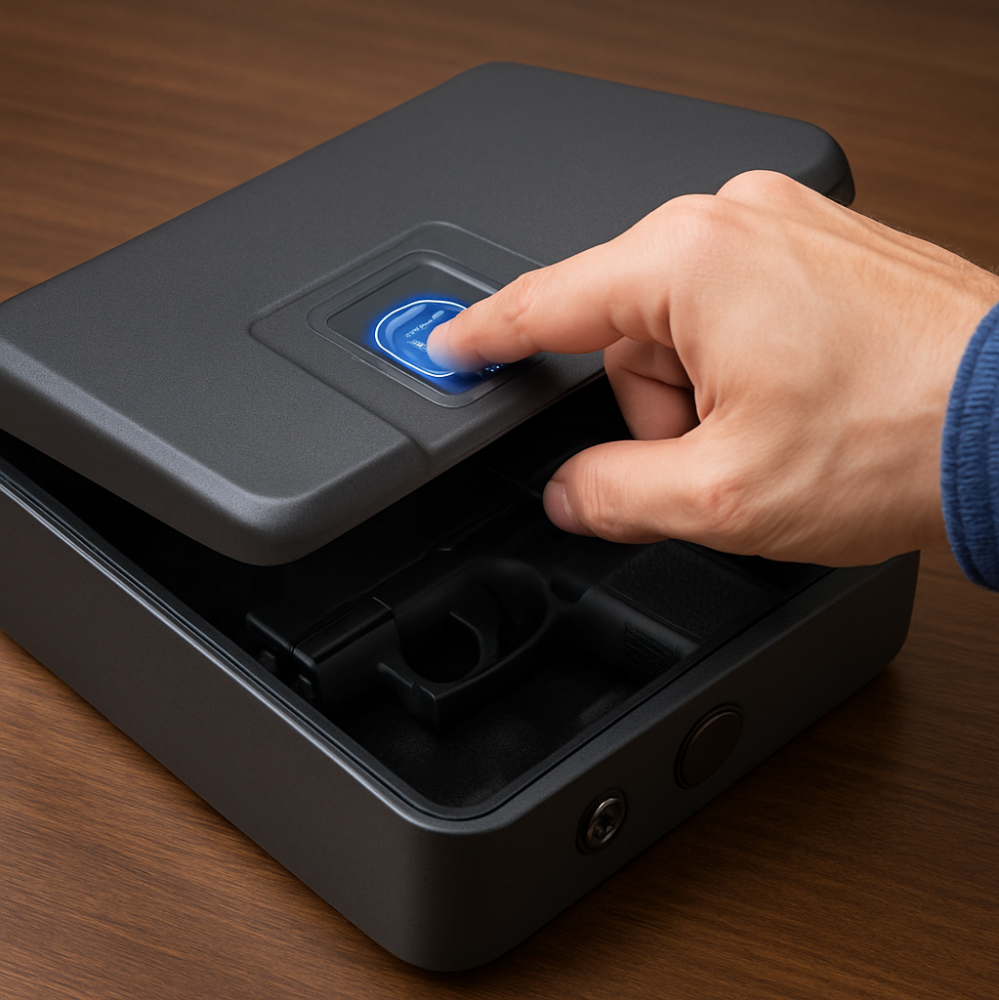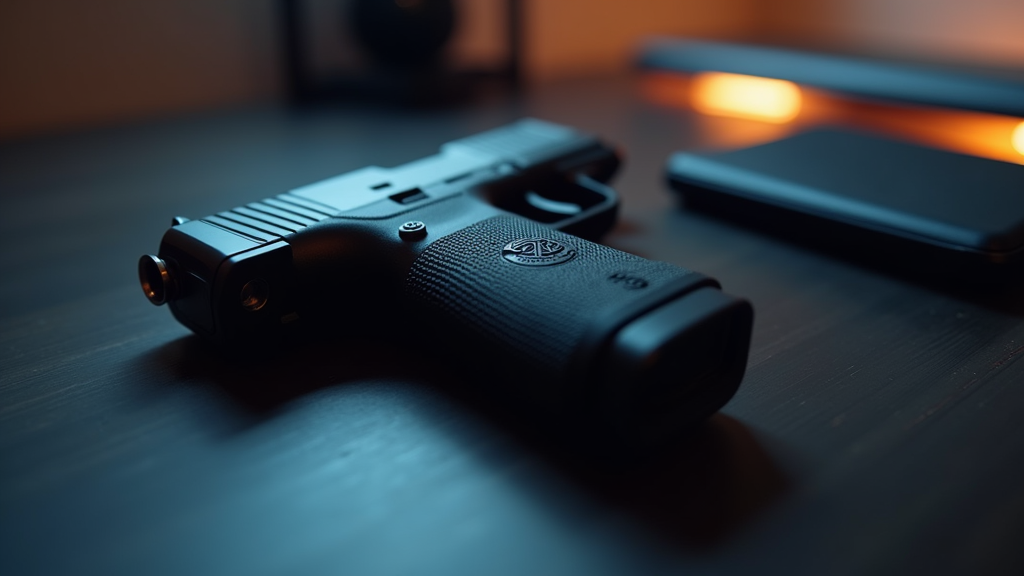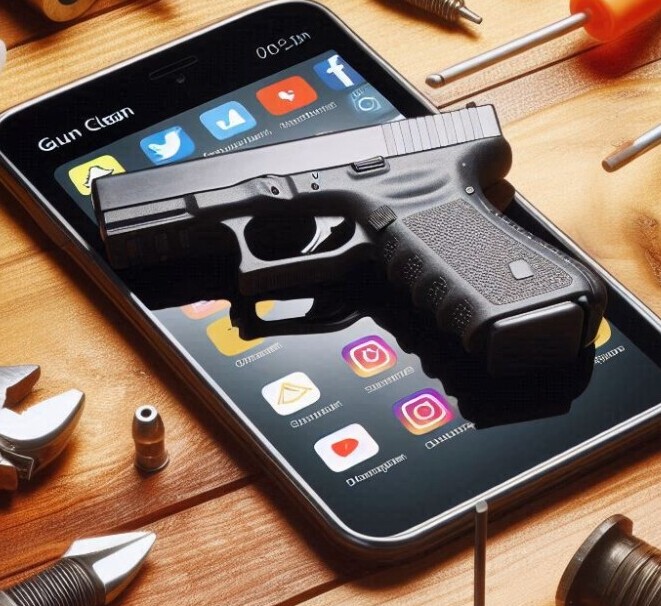Introduction
Importance of firearm maintenance and care
In the world of firearms, proper maintenance and care are crucial to ensure their functionality, reliability, and longevity. Firearms are intricate mechanical devices that require attention and regular upkeep.
One of the potential risks that gun owners may face is water exposure, which can occur due to accidents, outdoor activities, or natural disasters.
Understanding how to address the situation when a firearm gets wet or submerged is essential for responsible firearm ownership.
Potential risks and damages caused by water exposure
When a firearm comes into contact with water, it poses several risks and can lead to various forms of damage. Water can seep into the internal components of the firearm, causing corrosion, rust, or malfunction.
Additionally, water can affect the lubrication and compromise the firearm’s overall performance. If left unattended, the consequences of water exposure may range from minor functional issues to severe damage that renders the firearm unsafe or inoperable.
Therefore, it is vital to take immediate and appropriate actions to minimize the potential harm caused by water exposure to a firearm.
Assessing the Situation
Stay calm and ensure personal safety
The first step when encountering a wet or submerged firearm is to remain calm and prioritize personal safety. If the firearm was submerged in a dangerous or hazardous environment, such as a body of water with strong currents, it’s crucial to ensure your own well-being before attempting any actions related to the firearm.
Evaluate the level of water exposure and severity
Once you are in a safe environment, assess the extent of water exposure to your firearm. Determine whether it was partially submerged, fully submerged, or simply exposed to water on the surface. Understanding the severity of the situation will help you gauge the potential damage and determine the necessary steps for recovery.
Differentiate between freshwater and saltwater exposure
It is important to differentiate between freshwater and saltwater exposure. Saltwater exposure can be particularly harmful to firearms due to the corrosive properties of salt.
If the firearm was submerged or exposed to saltwater, the risks of corrosion and damage are heightened. Freshwater exposure still poses risks, but typically to a lesser extent.
Understanding the type of water exposure will guide your actions and the subsequent cleaning and maintenance processes.
Immediate Actions
Remove the firearm from the water source
As soon as you realize that your firearm has been exposed to water or submerged, the first immediate action is to remove it from the water source. Carefully retrieve the firearm, ensuring not to cause any further damage or mishaps during the process.
Unload the firearm and ensure it is not loaded
Prioritize safety by unloading the firearm immediately. Treat the firearm as if it were loaded and follow the proper unloading procedures specific to your firearm model.
Check the chamber, magazine, and any other potential areas where ammunition could be present to ensure the firearm is completely unloaded.
Disassemble the firearm (if applicable) for thorough inspection
If you are comfortable with disassembling your firearm and have the necessary knowledge and experience, consider disassembling it for a more thorough inspection.
Disassembling the firearm allows you to examine individual components for signs of water damage, corrosion, or rust.
However, exercise caution during the disassembly process, and if you are unsure or uncomfortable, it is recommended to seek professional assistance.
Dry the exterior using a soft cloth or towel
After removing the firearm from the water and unloading it, gently dry the exterior using a soft cloth or towel. Ensure that no water is left on the surface of the firearm, as lingering moisture can lead to corrosion or other forms of damage. Avoid using heat sources like hairdryers or direct sunlight, as excessive heat can cause further harm to the firearm.
Drying Process
Avoid using direct heat sources

When drying a wet firearm, it is crucial to avoid using direct heat sources such as hairdryers, heaters, or open flames. High temperatures can potentially damage the firearm’s components or finishes. Instead, focus on gentle and controlled drying methods.
Utilize moisture-absorbing materials like silica gel or rice
One effective method to aid in drying is to use moisture-absorbing materials like silica gel packets or uncooked rice. Place the firearm in a container or bag with these materials, which will help absorb excess moisture from the surrounding environment.
Ensure that the firearm is not in direct contact with the moisture-absorbing materials to avoid any potential particles getting lodged in the firearm.
Utilize a fan or air circulation to aid in drying

Another effective approach is to utilize a fan or create air circulation in the drying area. Position a fan to blow air gently over the firearm, promoting evaporation and drying. This method can be particularly useful when combined with the moisture-absorbing materials mentioned earlier.
It is important to note that the drying process may take time, depending on the extent of water exposure. Be patient and allow sufficient time for the firearm to dry thoroughly before proceeding to the next steps.
Rushing the drying process can lead to inadequate moisture removal and potential complications in the subsequent cleaning and maintenance stages.
Cleaning and Lubrication
Inspect all components for water damage or corrosion
After the firearm has been thoroughly dried, it’s essential to inspect all the components for any signs of water damage or corrosion. Carefully examine the exterior, as well as the internal parts, including the barrel, slide, frame, trigger assembly, and springs. Look for rust, discoloration, or any unusual changes that may have occurred due to water exposure.
Clean all affected parts with a recommended firearm cleaner
Use a recommended firearm cleaner or solvent to clean all the affected parts. Follow the manufacturer’s instructions and use appropriate cleaning tools such as brushes, patches, or cotton swabs. Pay special attention to areas prone to water retention or corrosion, ensuring thorough cleaning and removal of any debris, residue, or rust.
Remove any rust or corrosion using appropriate tools
If you notice any rust or corrosion during the inspection, it’s crucial to remove it promptly. Utilize appropriate tools like rust remover, fine-grit sandpaper, or copper brushes to gently remove the rust or corrosion.
Take care not to damage the firearm’s surfaces or finishes while performing this step. If the rust or corrosion appears severe or extensive, it may be advisable to seek professional assistance.
Apply lubrication to prevent future damage and ensure smooth operation
Once the firearm is cleaned and free of any rust or corrosion, it’s essential to apply lubrication to protect against future damage and ensure smooth operation.
Use a high-quality firearm lubricant or oil recommended by the manufacturer. Apply lubrication to key areas such as the slide rails, barrel, trigger assembly, and other moving parts.
Follow the manufacturer’s instructions regarding the appropriate amount of lubrication to be applied.
Proper lubrication helps prevent friction, reduces the risk of rust formation, and ensures the firearm functions as intended.
However, avoid over-lubrication, as excess lubricant can attract debris or interfere with the firearm’s operation. A light, even application is usually sufficient.
Regularly check and maintain the lubrication of your firearm as part of your routine maintenance practices.
Seeking Professional Assistance
When to consider professional gunsmith services
While many firearm owners can handle basic maintenance and cleaning, there are instances where professional assistance from a gunsmith or firearm service center is highly recommended. Consider seeking professional help in the following situations:
- Severe water damage: If the firearm has sustained significant water damage, extensive corrosion, or internal complications, it is advisable to consult a professional gunsmith. They have the expertise and specialized tools to assess and repair such issues properly.
- Limited experience or knowledge: If you are unsure about disassembling, cleaning, or repairing your firearm, it is safer to entrust the task to a professional gunsmith. They possess the necessary training and experience to handle various firearm models and diagnose potential problems accurately.
- Valuable or collectible firearms: If your firearm holds significant monetary or sentimental value, it is wise to seek professional assistance to ensure its preservation and proper handling during the restoration process.
Benefits of professional inspection and cleaning
Opting for professional inspection and cleaning services for your wet or submerged firearm offers several benefits:
- Expertise and specialized equipment: Gunsmiths possess in-depth knowledge, skills, and access to specialized tools required for comprehensive firearm inspection, cleaning, and restoration. They can identify hidden or subtle damages that may not be apparent to an untrained eye.
- Preserving firearm value: Professional cleaning and maintenance can help preserve the value and integrity of your firearm, especially if it is a rare, antique, or collectible piece. Gunsmiths can employ restoration techniques that maintain its historical or monetary worth.
- Safety assurance: By entrusting your firearm to a qualified gunsmith, you ensure that it is restored to its proper working condition, minimizing the risk of malfunctions or accidents caused by inadequate cleaning or repair.
Locating reputable gunsmiths or firearm service centers

Finding a reputable gunsmith or firearm service center is essential for quality service. Consider the following methods to locate reliable professionals:
- Referrals: Seek recommendations from fellow firearm owners, shooting clubs, or firearm dealers who have had positive experiences with gunsmiths in your area.
- Online directories and reviews: Utilize online directories and review platforms to research and evaluate gunsmiths or firearm service centers. For example, Yelp or Google Maps. Read customer reviews and ratings to gauge their reputation and customer satisfaction.
- Contact local shooting associations or ranges: Reach out to local shooting associations, gun ranges, or firearm enthusiasts’ groups for recommendations or information on reputable gunsmiths in your vicinity.
- Gunsmiths Near My Location: Coming soon, a page on this site that will help you find gunsmiths near me.
Before entrusting your firearm to a gunsmith, ensure they are properly licensed, insured, and possess a good reputation. Communicate your specific needs, the history of water exposure, and any concerns you have about the firearm’s condition to facilitate a thorough evaluation and appropriate restoration.
Conclusion
In conclusion, encountering a wet or submerged firearm can be a concerning situation for any firearm owner. However, by following the appropriate steps and taking immediate action, you can mitigate the potential damage and restore your firearm to a safe and functional condition.
The importance of assessing the situation, removing the firearm from water, and thoroughly drying it cannot be overstated. Additionally, understanding the significance of proper cleaning, inspection, and lubrication is essential for preventing long-term damage and maintaining the firearm’s performance.
While many firearm owners can handle the necessary steps on their own, there are instances where seeking professional assistance from a gunsmith or firearm service center is highly recommended, particularly for severe water damage or valuable firearms.
Lastly, implementing preventive measures such as safe storage, utilizing waterproof cases or bags, and following regular maintenance routines will help minimize the risk of water exposure and ensure the longevity of your firearm.
Remember, responsible firearm ownership involves not only using firearms safely but also caring for them properly. By being proactive and prepared for water-related incidents, you can protect your investment, ensure your own safety, and enjoy the reliability of a well-maintained firearm for years to come.
FAQ
Do guns ruin if they get wet?
If guns get wet, they can potentially suffer damage, such as corrosion or rust, if not promptly and properly dried and cleaned. It is crucial to dry and clean firearms thoroughly to prevent long-term damage.
Can a gun still fire when submerged in water?
In most cases, a gun will not fire when submerged in water. Water can disrupt the ignition process and prevent the gunpowder from igniting. Attempting to fire a submerged firearm can be extremely dangerous and should be avoided.
Should you store guns wet or dry?
Guns should always be stored dry. Storing guns while they are wet or damp increases the risk of corrosion and rust. It is important to thoroughly dry firearms after cleaning or exposure to moisture before storing them to prevent damage.
Do guns sink in water?
Most guns have a density greater than water, so they tend to sink when submerged. However, factors like materials used and attachments can influence buoyancy. It’s crucial to retrieve a submerged firearm promptly and take appropriate measures to prevent damage.
What takes moisture out of a gun safe?
To remove moisture from a gun safe, you can use desiccant products such as silica gel packets, dehumidifiers, or electric dehumidifier rods. These options help absorb excess moisture in the safe and maintain a dry environment for storing firearms.
Will guns rust in a safe?
If a safe is not properly maintained or lacks adequate moisture control, firearms can rust inside. It’s essential to use moisture-absorbing materials like desiccants or dehumidifiers and regularly monitor and maintain a controlled humidity level inside the safe to prevent rust and corrosion.
Can a gun safe be too dry?
While excessive dryness itself may not harm firearms, it can lead to other issues. Extremely low humidity levels can cause wood stocks to shrink or crack over time. Maintaining a moderate level of humidity (around 45-50%) inside the safe is generally recommended to preserve firearm condition.




Leave a Reply